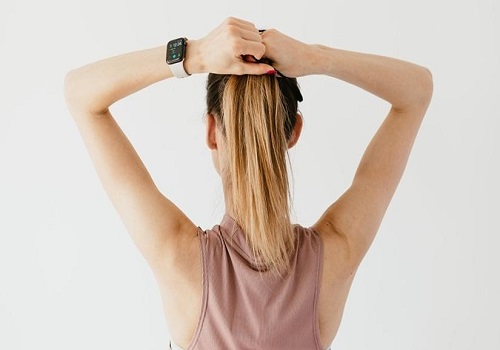Haircare in your 40s

Follow us Now on Telegram ! Get daily 10 - 12 important updates on Business, Finance and Investment. Join our Telegram Channel
Everybody experiences awful hair days, right? Even more so than others are some. As you get older and your body changes regularly, ones may suffer hair loss, dandruff, split ends, frizzy hair, and balding.
Is there a fix for these issues? Yes, all of these issues can be resolved by using Ayurveda. Ayurvedic therapies also have no negative effects, for hair loss repair hair follicles and increase hair durability.
But before you jump right into it, it is very important to Know Your Hair Type.
According to Ayurveda, our body functions are governed by three vital energies: Vata, Pitta, and Kapha. Each person consists of a "tridosha" combination, with one or two doshas predominating. The state of your hair's health and type are determined by this combination.
Vata Hair Type
You will have a Vata hair type if your Prakriti is Vata-dominant. By giving your hair follicles the correct nutrients they require, you may maintain and balance your Vata dosha. The typical Vata hair type is porous, thin, and straight. Your scalp and hair get dry when the Vata dosha in your body is elevated because your body produces less sebum as a result. This results in split ends, frizzy, dry hair, and hair loss.
Pitta Hair Type
Once more, Pitta hair is characteristic of a Prakriti that is Pitta-dominant. Pitta is in charge of the production of hair proteins, colours, and metabolic activity in the hair. Pitta hair is often wavy and average in thickness. Premature greying, itchy scalp, hair loss, clogged follicles with bacteria buildup, and other indications of a pitta imbalance.
Kapha Hair Type
Last but not least, having a Kapha hair type is a sign of a Kapha dominating Prakriti. Your body's kapha energy is responsible for preserving the structure and lubrication of your hair. A healthy head of hair is thick, lustrous, and curly. Any imbalance in the kapha causes your scalp to produce too much sebum, which invariably results in greasy dandruff, an oily scalp, itching, hair loss, and other issues.
Every person has unique needs. Therefore, it's critical to comprehend your hair type and the state of your dosha levels in order to implement the most efficient Ayurvedic hair care regimen.
The greatest Ayurvedic hair care techniques are listed here for you to effortlessly incorporate into your daily life. These routines will help you achieve internal dosha equilibrium as well as long, healthy hair:
Eating Healthy
Eating healthy is essential for strong and long-lasting hair. Healthy diets need to have nutrients that nourish and strengthen the hair follicles from within. Eating dosha-specific fruits and vegetables can help keep the body healthy and robust while also keeping the doshas in balance.
Hair Oiling and Washing
Hair oils replenish the follicles and scalp while also aiding in moisture retention, which is critical in avoiding hair loss. Always fully oil your hair before washing it, and make this a part of your hair care regimen.
You can either use a good extra virgin coconut oil or purchase a herbal hair oil that contains a mix of several Ayurvedic herbs like amla, rose petals, reetha, etc. It is recommended that you wash your hair twice a week with a natural powder and condition them with an organic root-strengthening hair mask.
Scalp Massages
According to Ayurveda practices, you should always massage your scalp with warm hair oil before washing your hair. Massaging the scalp gently with herbal oil stimulates hair development and strengthens the hair from root to tip.
(Amritha Gaddam, Founder and CEO, The Tribe Concepts)












 320-x-100_uti_gold.jpg" alt="Advertisement">
320-x-100_uti_gold.jpg" alt="Advertisement">












